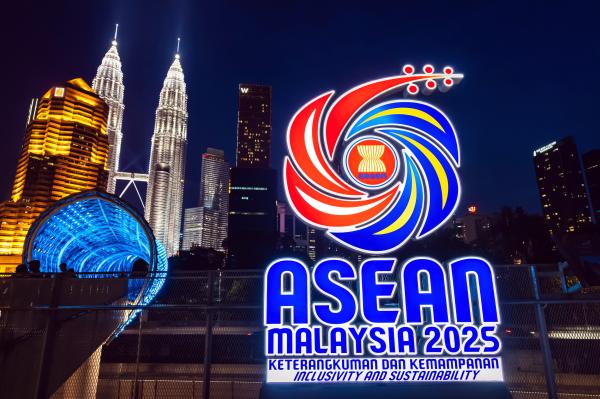By Danial Dzulkifly
SHAH ALAM, May 28 — Asean, along with the Gulf Cooperation Council (GCC) and China, has signalled a historic recalibration of global trade alliances, leveraging their collective strengths in a world increasingly fractured by protectionism and geopolitical tension.
The inaugural Asean-GCC-China Summit, held in Kuala Lumpur yesterday, marked the economic powerhouses’ first trilateral meeting.
The three regions represent over two billion people and a nearly US$25 trillion gross domestic product.
But beyond the numbers, the summit was framed as a rare configuration of partners united by trade, trust and shared future.
While the summit was mainly behind closed doors, the following are key takeaways.
[caption id="attachment_402444" align="aligncenter" width="1200"] Prime Minister Datuk Seri Anwar Ibrahim speaks during the Asean-Gulf Cooperation Council-China Summit at the Kuala Lumpur Convention Centre on May 27, 2025. — Picture via FACEBOOK/ANWAR IBRAHIM[/caption]
Prime Minister Datuk Seri Anwar Ibrahim speaks during the Asean-Gulf Cooperation Council-China Summit at the Kuala Lumpur Convention Centre on May 27, 2025. — Picture via FACEBOOK/ANWAR IBRAHIM[/caption]
Pivot away from the US
While past Asean Summits have often been limited to broad pronouncements, this year’s gathering, hosted by Malaysia, was of a tone sharpened by the economic fallout following the United States’ new tariffs and global instability.
Prime Minister Datuk Seri Anwar Ibrahim, who chaired this year’s summit, said he had written to the White House to request an Asean-US meet, expressing the bloc’s desire to speak with one voice in defending regional interests amid rising unilateralism.
However, many Asean members, such as Vietnam, Thailand, Singapore and Malaysia, have held bilateral trade talks with US representatives.
Despite each nation’s differing interests, the 46th Asean Summit aimed to showcase Asean and its partners’ soft power, economic weight, and strategic position.
The summit was also to illustrate that Asean, the GCC, and China can tap into each other’s strengths, with Asean’s growing labour market and skilled population, the GCC’s financial capital and energy base, and China’s global leadership in manufacturing and artificial intelligence potentially forming the backbone of a new economic growth engine.
[caption id="attachment_402416" align="aligncenter" width="1200"] Prime Minister Datuk Seri Anwar Ibrahim speaks during the Asean-Gulf Cooperation Council-China Summit at the Kuala Lumpur Convention Centre on May 27, 2025. — Picture by REMY ARIFIN/MEDIA SELANGOR[/caption]
Prime Minister Datuk Seri Anwar Ibrahim speaks during the Asean-Gulf Cooperation Council-China Summit at the Kuala Lumpur Convention Centre on May 27, 2025. — Picture by REMY ARIFIN/MEDIA SELANGOR[/caption]
Strong trade ties
China remains Asean’s largest trading partner, with bilateral trade reaching US$700 billion (nearly RM3 trillion) in 2023.
The GCC followed closely, recording US$130.7 billion in trade with the bloc last year and aiming to increase that figure to US$180 billion by 2032.
However, intra-Asean trade remains relatively modest, accounting for just 20 to 24 per cent of the bloc’s total trade.
Investment, Trade and Industry Minister Tengku Datuk Seri Zafrul Abdul Aziz said the upcoming upgraded Asean Trade in Goods Agreement (Atiga), set to be signed in October, will drive deeper liberalisation across key sectors including finance, energy, and communications.
He said non-tariff barriers, especially in financial services, are still challenges to integration, adding that each Asean member retains its own sensitivities when it comes to foreign ownership in critical sectors.
But he was optimistic there is room for improvement in easing regulatory bottlenecks, and pointed to the Asean Digital Economy Framework Agreement, due by year end, as an important step to build a more inclusive digital trade ecosystem within the bloc.
[caption id="attachment_402372" align="aligncenter" width="1200"] Asean and Gulf Cooperation Council delegates pose for a photo during the 46th Asean Summit at the Kuala Lumpur Convention Centre on May 27, 2025. — Picture by BERNAMA[/caption]
Asean and Gulf Cooperation Council delegates pose for a photo during the 46th Asean Summit at the Kuala Lumpur Convention Centre on May 27, 2025. — Picture by BERNAMA[/caption]
Turning consensus into real action
Anwar said the summit’s significance lies not just in symbolism but in Asean’s growing resolve to implement real, concrete outcomes that benefit its 660 million people.
Citing discussions around the South China Sea code of conduct and free trade agreements such as the upgraded Atiga and the Indonesia-Malaysia-Thailand Growth Triangle, Anwar said the focus has now shifted from talking about integration to implementing frameworks that directly improve livelihoods.
“We’ve seen many pronouncements in the past, but this time there’s a dramatic change in attitude. There’s a seriousness, a determination, a collective will to deliver concrete results, and everything must be in the name of Asean,” he said.
Anwar also acknowledged that while individual member states are pursuing bilateral negotiations, there remains a firm understanding that Asean decisions must not come at the expense of any one nation.
Pointing to the the ongoing crisis in Myanmar, Anwar said Asean has made quite yet meaningful progress with consultations are now taking place between both sides, albeit informally, focused on securing a prolonged ceasefire, facilitating humanitarian aid, and laying the groundwork for dialogue, all within the framework of the Five-Point Consensus.
He also pointed to Timor Leste’s Asean accession as an example of a regional consensus being realised after years of talks, with its full membership due by year end.




